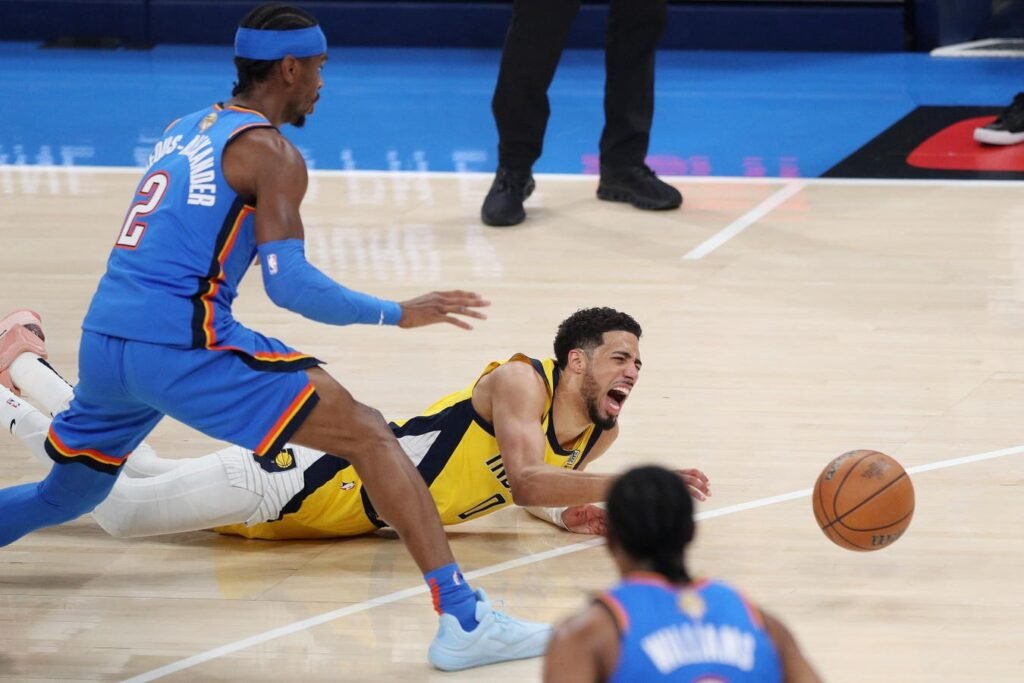Tyrese Haliburton #0 of the Indiana Pacers falls to the floor after suffering a right Achilles … More
Recent NBA seasons have seen a concerning trend with several players succumbing to Achilles tendon injuries. The latest victim is Tyrese Haliburton, the star point guard for the Indiana Pacers, who tore his right Achilles tendon during Game 7 of the NBA Finals against the Oklahoma City Thunder. This unfortunate incident adds him to a list of seven players who suffered similar injuries during the 2024-2025 NBA season, including notable names like James Wiseman, Isaiah Jackson, Dejounte Murray, Dru Smith, Jayson Tatum, and Damian Lillard.
The prevalence of Achilles injuries in this season far exceeds the historical average, prompting speculation about the underlying causes. One theory suggests that players may be returning to the court before fully recovering from lower extremity injuries, predisposing them to Achilles injuries. Haliburton’s experience with a calf strain prior to his Achilles tear raises questions about the connection between calf injuries and Achilles injuries.
Haliburton’s Achilles Injury and Impact
Haliburton’s injury, like many Achilles tears, was non-contact and occurred during a pivotal moment in the game. Despite his significant contributions earlier in the match, he was forced to undergo surgery and will likely miss a substantial portion of the upcoming NBA season. His absence dealt a blow to the Pacers, who ultimately fell short in the NBA Finals.
The unfortunate reality is that Haliburton is not alone in his plight, as several players have suffered similar fates during the postseason. The age range of the affected players varies, with some, like Damian Lillard, already in their 30s, while others are still in their 20s. This diversity challenges the notion that age alone can explain the increase in Achilles injuries.
Possible Explanations for the Surge in Achilles Injuries
Several theories have been proposed to account for the spike in Achilles injuries, ranging from players playing through injuries to the impact of lengthy basketball seasons. The evolving style of play in the NBA, changes in footwear design, and advancements in nutrition and conditioning practices have also been cited as potential contributing factors.
While it remains unclear whether these theories hold true, the prevalence of Achilles injuries in the recent NBA season warrants further investigation. Whether this surge represents a temporary anomaly or a more concerning trend remains to be seen.
As the NBA grapples with the repercussions of these injuries, the focus shifts to prevention strategies and player safety. The road to recovery from an Achilles tear is long and arduous, underscoring the importance of safeguarding players against such debilitating injuries in the future.


